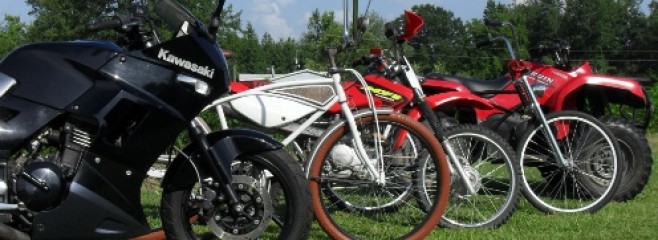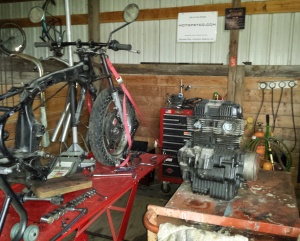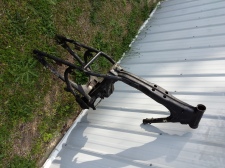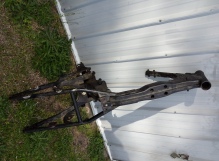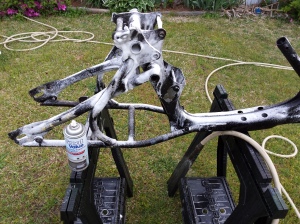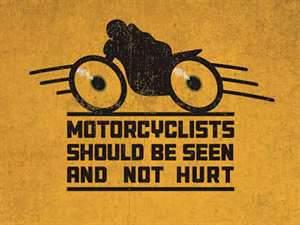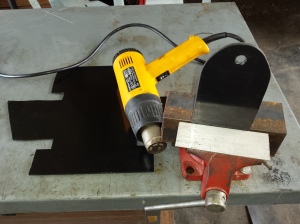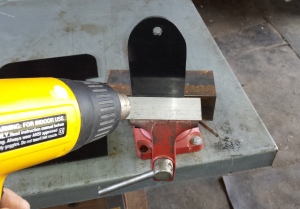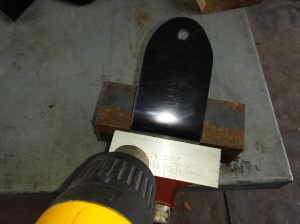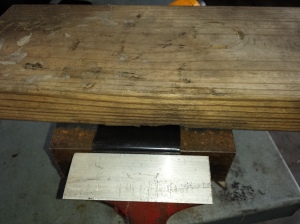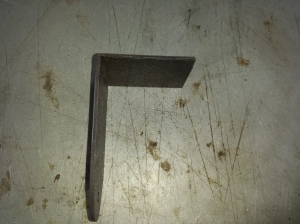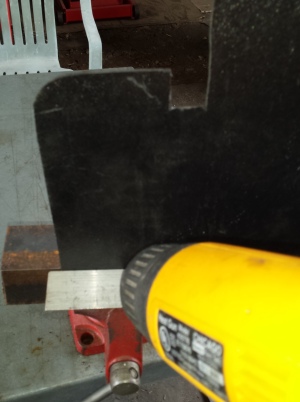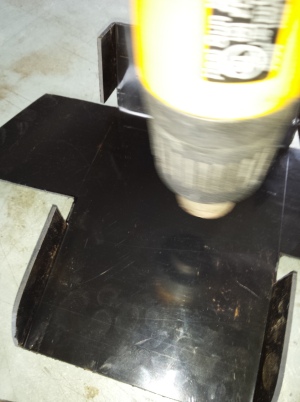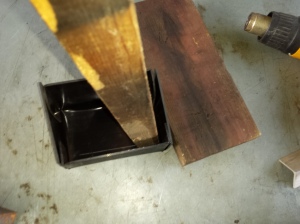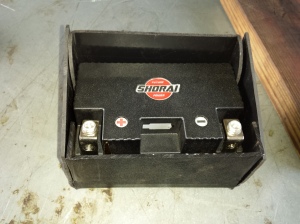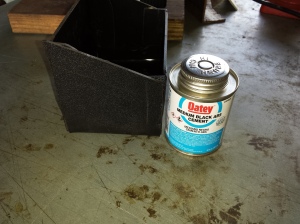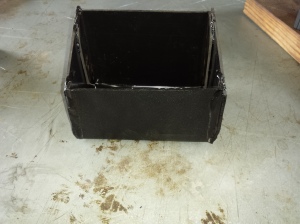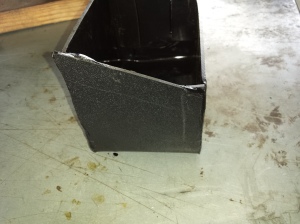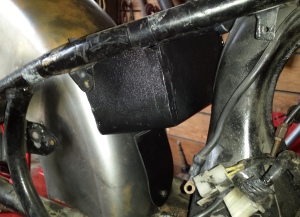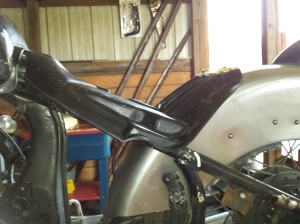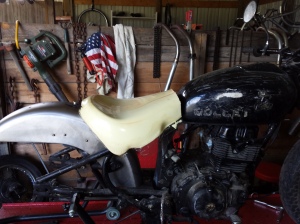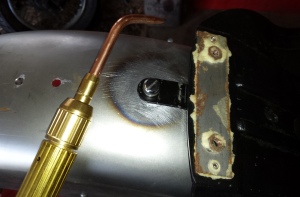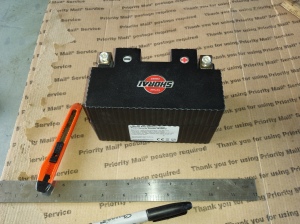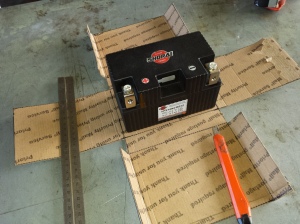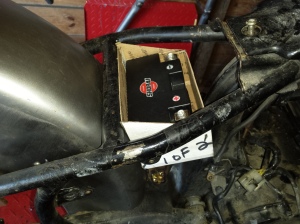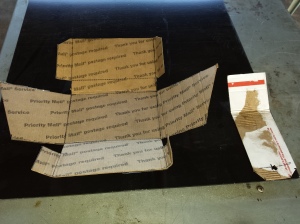Just thought I’d share what’s going on around the barn a little bit. Getting the fender, seat and battery box figured out now means that it is time for the real work to begin.
A few days ago I dropped the engine out but since then most of my spare time has been spent elbows deep in the severely damaged engine of some guys atv. Today I caught a little break since I have to order more parts for the Brute Force, it gave me a chance to finish tearing this one down to a bare frame.
Now the previous owner of this fine mosheen was a true rat biker and whenever he felt the need to attach something else to it that could not be tied or glued on he resorted to that favorite motorcycling custom trick of using self drilling screws to tack shit to his motorcycle. So I spent a couple of hours brazing up small holes in the frame, before it was time to break out the angle grinder and safety glasses and remove all of the unwanted tabs from this frame.
Some of the tabs were saved and will be reused on this and other projects, but most of them were tossed into the scrap bin to be recycled. Now its time to soak it down with oven cleaner and get it completely clean so I can do a little more welding then clean it all up and prep for paint.
By the way, I have been documenting the crankshaft replacement of the Kawasaki Brute Force 750 and will be posting a ton of pictures in the days to come so stick around.
Peace Y’all
